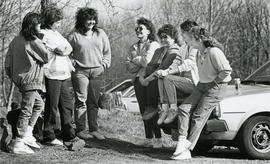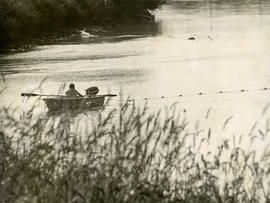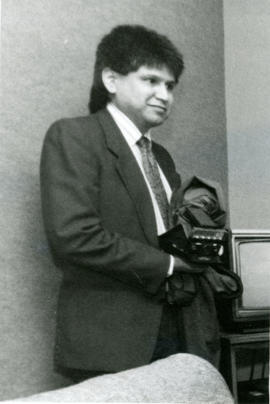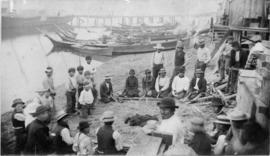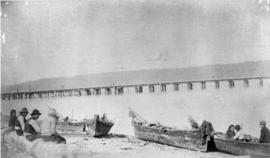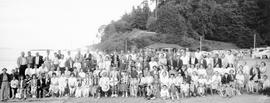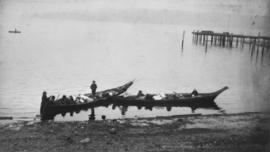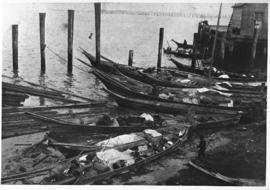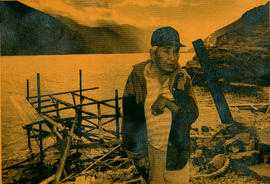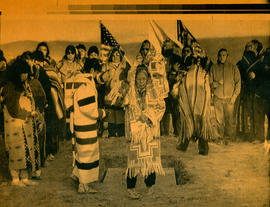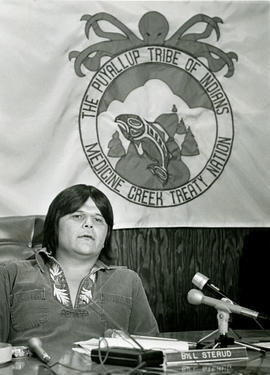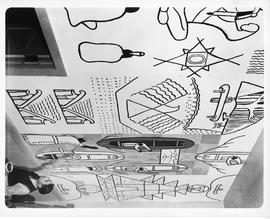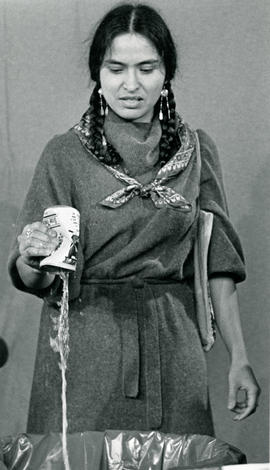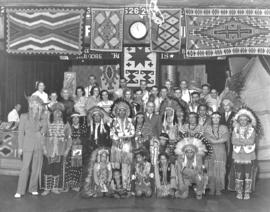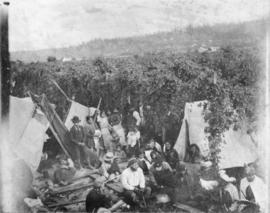On July 31, 1936, promoter Rookie Lewis outdid himself by staging an authentic "Indian Wedding" as the evening's special attraction during his Walkathon (dance marathon) at the Century Ballroom in Fife. Chief White Eagle conducted the Native American wedding of So-To-Le-O and groom Qua-Le-Ales, with rites performed in sign language. Five different tribes participated in the wedding. The Walkathon was heavily attended by citizens of Tacoma and Seattle, since both cities had local ordinances forbidding such marathons. Approximately 30 people were pictured, first two rows were Native-Americans in costume, others may be some of the remaining participants in the Walkathon. Tribal blankets serve as backdrop. (T.Times 7-31-36, p. 4-article; 8-1-36, p. 5-article; www.historylink.org) (filed with Argentum)
Indians of North America--Clothing & dress; Weddings--Fife; Marathons--Fife;
